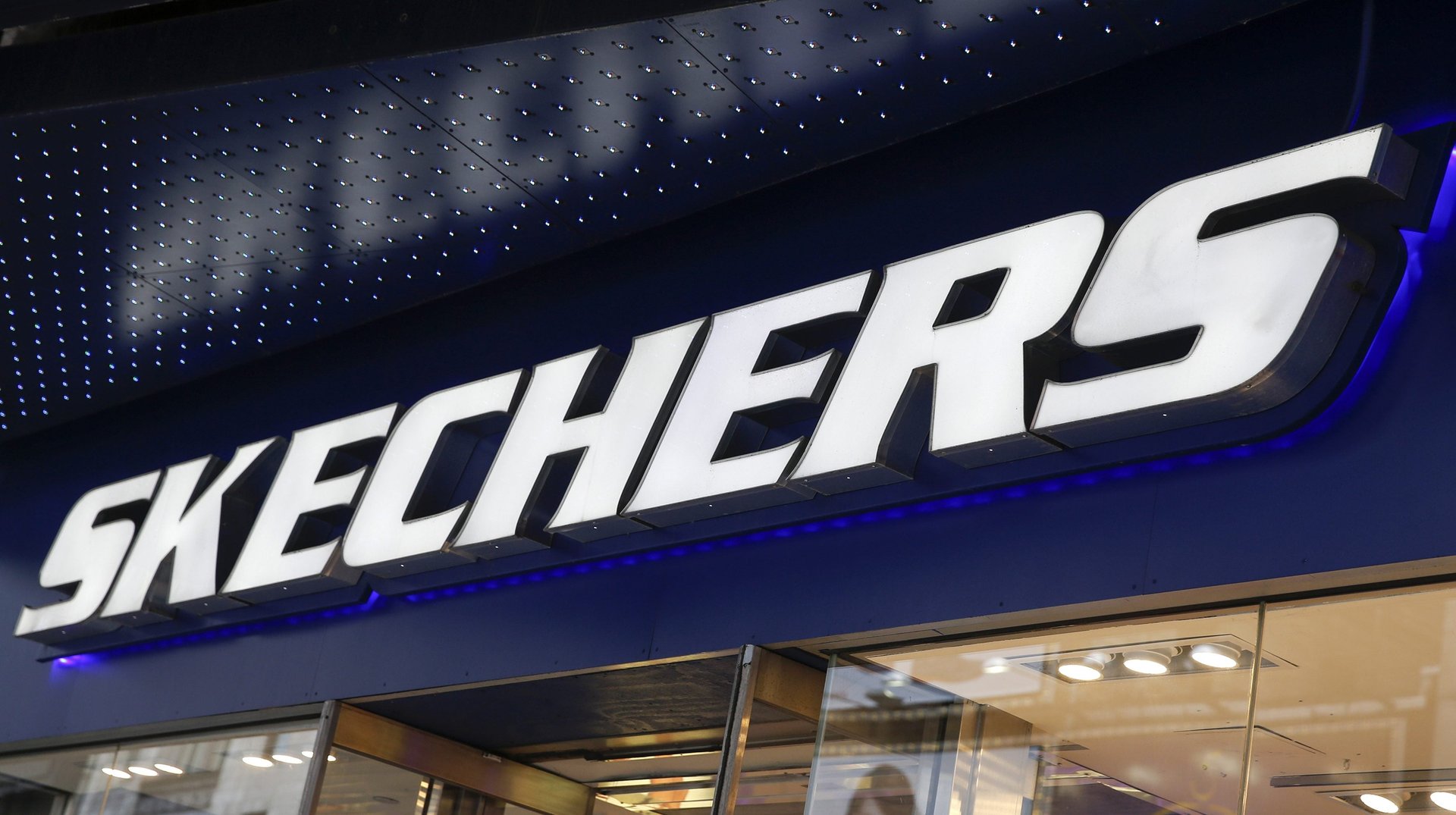Skechers, Kodak, Hostess: Household brands without any women on the board
Skechers, the footwear company, sells a dizzying array of sneakers, athletic apparel, and accessories to women and girls. The company sponsors elite women athletes like distance runner Kara Goucher and golfer Brooke Henderson, and created a “wellness collection” aimed at boosting sales to women.


Skechers, the footwear company, sells a dizzying array of sneakers, athletic apparel, and accessories to women and girls. The company sponsors elite women athletes like distance runner Kara Goucher and golfer Brooke Henderson, and created a “wellness collection” aimed at boosting sales to women.
And it does all that without even one woman on its board of directors.
Skechers is one of the most prominent US companies without women on its board, but it’s far from alone. As of the end of September, there were 624 all-male boards in the Russell 3000, an index of the 3,000 largest publicly traded US corporations—meaning one out of five public companies don’t have any women in a corporate oversight position. The numbers are from Equilar, which keeps data on executives and works with its corporate clients on compensation and board recruiting.
Most of the companies with all-male boards are relatively small, but the list included 11 members of the Fortune 500 (see table below), although one, HollyFrontier, added two women on Nov 6. The biggest company without women directors is Centene, a $40.6 billion health insurer whose board includes such prominent names as former Wisconsin governor Tommy Thompson and Dick Gephardt, the former majority leader of the US House of Representatives.
Other familiar names on the list include Hostess Brands, maker of Twinkies; Eastman Kodak, the once-mighty film company; and Tivo, the digital video recording company. Technology and finance are the most represented sectors, and a third of the companies are based in the US south, more than any other region. (Click here to see the full list of 624 companies in the Russell 3000 without any female directors.)
These are the Fortune 500 companies without a female director, according to Equilar, which collects information on public company executives and boards of directors from proxy statements and regulatory filings. The list reflects the Equilar database as of Sept. 30.
*Added women to its board since Sept. 30.
Skechers doesn’t have enough revenue to appear on the table above, but it stands out as a notorious scofflaw on gender diversity.
Founded in 1992 by Robert Greenberg, who previously owned the L.A. Gear brand, Skechers went public in 1999 and is on pace to reach $4 billion in annual sales. It’s a big company that acts small: Its cozy board has four insiders—including Greenberg and two of his sons—and five other men, mostly from Los Angeles, in banking, fashion, and entertainment.
In 2011, after pressure from the California teachers pension fund (an investor), Skechers said it would add a formal diversity policy to address the lack of women and minorities on its board. But it never adopted the policy or diversified its board. This year, New York state comptroller Thomas DiNapoli introduced a shareholder proposal on behalf of his state’s pension funds, urging Skechers to take steps to add female and minority board members, and to produce a report to shareholders explaining its progress.
The language in the comptroller’s proposal is unusually pointed for an SEC filing, reflecting the exasperation with Skechers’ stonewalling. ”Has the board really been unable in over 15 years to identify a single female or minority candidate who is ‘qualified’ to be a director of a footwear company?” the New York proposal reads.
In its response, Skechers says that while it acknowledges the benefits of diversity, “the proposal could impede its ability to select the most suitable and qualified candidates.” The company declined to comment to Quartz.
While the direct link between the presence of women directors and a company’s financial success has never been proven, there’s plenty of evidence of a correlation. Heterogeneous groups make better decisions because their less likely to succumb to group think, and will better understand the needs and challenges of all their customers. Boards that aren’t considering adding women are eliminating half of the world’s available talent from their pool of candidates.
The good news is that most corporations do realize the value of having women on their boards. Women now occupy 20% of all board seats (pdf) at Fortune 1000 companies, according to 2020 Women on Boards, an advocacy group. Almost 30 boards have achieved at gender parity, and on nine corporate boards, the majority of directors are women. But the number of public companies with all-female boards remains constant: It’s still zero.
Update: This post has been updated to note that HollyFrontier added two women to its board Nov. 6, and to explain Equilar’s methodology.